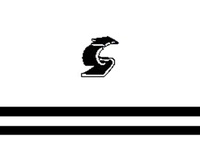Seletar Institute

Seletar Institute (Abbreviation: SI; Chinese: 立德高级中学) was one of the four original centralised institutes (CI) in Singapore and one of the pre-university centres in Singapore that offers a three-year curriculum leading to the Singapore Cambridge (UCLES) General Certificate of Education Advanced Level examination.
History
SI was established as Singapore's third centralised institute in 1988 and began operations with 17 members of staff and 186 students in January 1989, at the then-vacant Upper Thomson Secondary School ex-campus at 14.5 km Upper Thomson Road, opposite Springleaf estate. During the first 3 months of the pioneer batch in 1989, students spent their ECA (Extra Curricular Activities) to cut the tall wild grasses and paint the buildings. The first lecture theatre had an improvised white cloth as the projector screen - hung using strings from the four corners. There were no airconditioning and whenever the forthnightly fumigation from the Ministry of Environment came along, the students had to cover their mouth/nose with one hand and take lecture notes with the other. This was truly a "Kampung school" but one that very much retained the "Kampung spirit" which lacks in most other modern institutions of learning.
In 1990, the campus was expanded, with a new two storey block at the back of the original facility, consisting of 10 class rooms at Level 1 and 2 Lecture Theatres at Level 2. The pioneer batch students (10 classes or what was known as "Civics Tutorial Group") moved to the new block whilst the two junior batches remained at the old block. Its library, third LT and four additional classrooms was built in 1991, its fourth LT, gymnasium, weights room, fitness stations, art studio and students’ locker room in 1992 and its conference room, printing room, counselling room, resource rooms and staff lounges in 1993. Air-conditioners were installed extensively throughout campus. It underwent repainting, renovations and upgrades in 1994, with a new volleyball court and walkway to Block B from the canteen and Internet introduced in 1995. In1996, a student’s computer corner was created to facilitate students without internet access or computer. The institute received extensive funding from the Ministry of Education (MOE), which allowed the annual increment of facilities and refurbishing of most of the buildings, until 16 August 1995, when MOE announced that Seletar Institute will not be expecting any intake of prospective ‘A’ level students in the coming year of 1996.
Seletar Institute was a relatively advanced and sufficiently modernised pre-university centre compared to other JCs and CIs. However, all these went to waste as the institute was closed down and the campus abandoned, since 1998.
Pioneer Batch (1989-1991)
The founding principal was Mdm So Bie Leng with the following key teaching staffs:
Miss Soo Soo Eng (General Paper) Mrs Helen Chong (Economics) Mrs Wong (Accounting) Mrs Lim Farn York (General Paper) Mdm Wan (Chinese) Mr Tan Ching Huat (Chinese) Mr Lien (Physical Education) Miss Lee Sock Moy (Management)
Closure
On 16 August 1995, the Ministry of Education announced that Seletar Institute will not be enrolling new ‘A’ level students as of the academic year of 1996. In December 1997, SI closed down when her final batch of students graduated. The closure comes at a time when the government policy on after secondary education was moving towards self-sufficiency and in favour of training young professionals without going to university in post-secondary education institutes.
By 2004, all the four original centralised institutes in Singapore have become victim of the premature abandoning of the three-year pre-university project. Jurong Institute (JI) and Outram Institute (OI) merged to become Millennia Institute as of January 2004.
In her final two years of 1996 and 1997, more students left SI after their three-year course and when finally, left with a sole final batch that would graduate in 1997. This resulted in extra spaces for activities, more vacant classrooms and more resources concentrated on the welfare of each student. SI went on to create and design a nurturing environment for the final batch students, introducing programmes such as Special small-group tuition, renovating classrooms into Special Subject Rooms where all students are entitled space for decoration and their expression of artistic talents.
Paradoxically, when the institute was in her final academic semester, morale among the students were at an all-time high, most teaching staff from 1995 remained and that there was no imminent sign of closure throughout the campus, as all gardens, pathways, corridors, classrooms and venues were well-maintained.
In December 1997, SI closed down and the campus would only open again briefly for the returning alumnus in early-1998 to collect their 1997 GCE ‘A’ Level Examination results. The last principal of SI, Mrs Lysia Kee, was strongly worded throughout the final phase of the institute’s existence, citing repeatedly in morning assembly speeches that there will be no retention as a transfer for JC/CI was not feasible, and that the institute must cease all academic operations by November 1997.
Interestingly 1997 was the year where the pioneer batch male students (after serving in the National Service and taking a 3-year degree course) graduated and ready to join the workforce - but their alma mater was no more.
See also
| ||||||||||||||||||||||||||||||||||||||||||